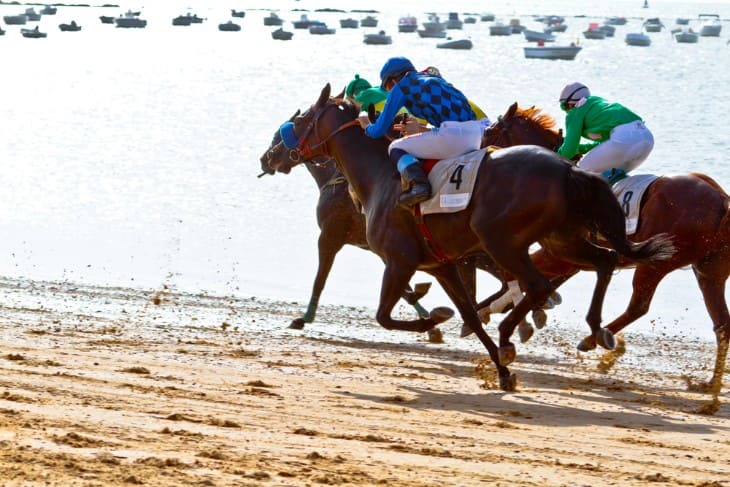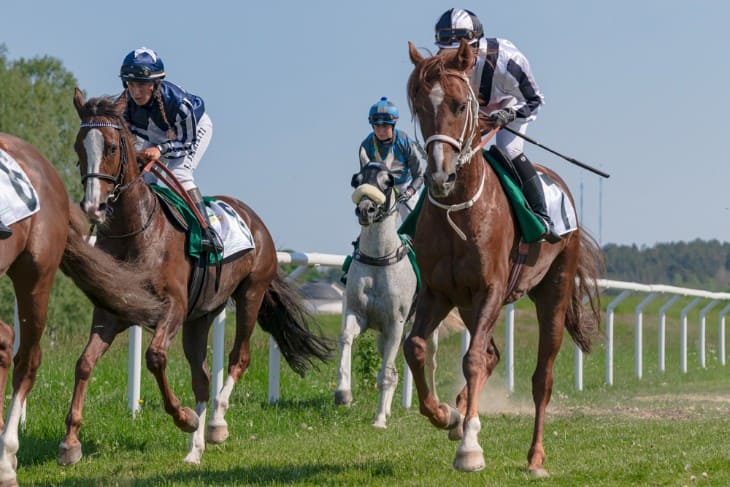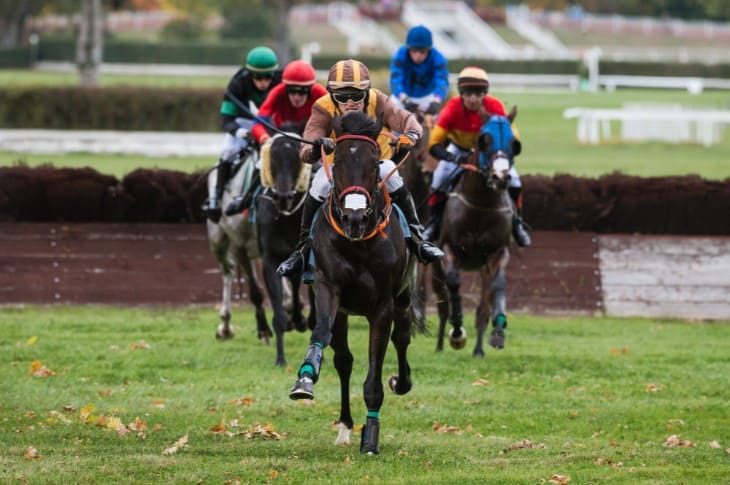- The Origin and Evolution of Jollies and Rags Terminology
- Jollies in Racing: Identifying the Favourites
- Rags: The Underdogs of the Track
- The Impact of Betting on Jollies and Rags
- Analyzing Historical Upsets: Jollies vs Rags
- Strategies for Betting on Jollies and Rags
- Influence of Race Conditions on Jollies and Rags
- Technology and Data Analysis in Modern Horse Racing
- Conclusion
The Origin and Evolution of Jollies and Rags Terminology
The terminology 'jollies and rags' finds its roots in British horse racing vernacular, a reflection of the sport's long-standing tradition and culture. 'Jollies' refers to the favourites in a race, the horses expected to perform exceptionally well based on past performances, training, breeding, and other factors. These horses often attract the most attention from bettors and analysts, given their higher chances of winning.
On the other hand, 'rags' denote the underdogs, the horses with long odds against them. These are typically the least favoured by bettors, often due to a lack of consistent performance, unfavourable conditions, or being relatively unknown. However, the evolution of this terminology is not just about the odds. It encompasses a broader narrative of horse racing, where unexpected victories and dramatic upsets are not uncommon. Understanding these terms provides insight into the betting culture and the unpredictable nature of horse racing, where any horse can defy the odds on a given day.
Several critical factors play a role in determining a horse's performance in racing. These include:
- Breeding and Pedigree: The lineage of a horse can significantly influence its potential for success. Horses from a lineage known for speed or endurance often inherit these traits.
- Training and Conditioning: Rigorous and strategic training regimes are essential. Trainers tailor programs to enhance a horse's natural abilities and prepare them for specific race types.
- Physical Health: A horse's health, including factors like muscle condition, respiratory health, and overall fitness, is crucial. Even minor health issues can impact performance.
- Racecourse and Surface: Different tracks and surfaces (grass, dirt, synthetic) can affect a horse's performance. Some horses perform better on certain surfaces or track layouts.
Understanding these factors helps in assessing the potential of jollies and rags in any given race. While jollies might have favourable indicators in many of these areas, rags often have one or more factors that seem to diminish their chances of winning.
Jollies in Racing: Identifying the Favourites
Identifying jollies in horse racing involves looking at several key indicators:
- Past Performance: A consistent record of high finishes in previous races often points to a potential favourite.
- Betting Odds: Short odds are a clear indicator of a jolly. These are determined by bookmakers based on various factors, including public opinion.
- Expert Opinions: Tipsters and racing analysts often provide insights into which horses are expected to perform well.
- Recent Form: Horses that have been performing well in recent races are often considered jollies.
While these indicators are helpful, they are not foolproof. Horse racing is unpredictable, and even the strongest favourites can be outperformed on race day. However, understanding these indicators can provide a clearer picture of the race dynamics and which horses are expected to lead the pack.
Rags: The Underdogs of the Track
Rags, in horse racing parlance, are those contenders deemed least likely to win, often facing long odds. These horses may not have the pedigree, track record, or training background that favour the favourites. However, their role in the sport is pivotal. Rags embody the unpredictability and drama of horse racing, often leading to surprising outcomes that captivate spectators and bettors alike. These horses can sometimes leverage conditions, such as a favourable track or weather, which unexpectedly play to their strengths.
The appeal of rags lies not just in their potential for a surprising win but also in the high odds they carry. A bet on a rag, though riskier, can yield significant returns. This aspect adds an extra layer of excitement and strategy to betting in horse racing. It's the unpredictability of these underdogs that often makes horse racing a thrilling sport.

The Impact of Betting on Jollies and Rags
Betting is a fundamental aspect of horse racing, profoundly influencing the sport's dynamics. The betting market often determines the categorisation of horses as jollies or rags. Bookmakers set odds based on various factors, including the horse's form, the calibre of the competition, and the insights from trainers and jockeys. These odds then guide bettors in their decision-making.
- Market Movements: Fluctuations in betting odds can indicate changing perceptions about a horse's chances of winning.
- Public Sentiment: Popular opinion can significantly sway the odds, especially in high-profile races.
- Professional Bettors: Their strategies and bets can influence market odds, often leading to a shift in a horse's status from a rag to a jolly or vice versa.
The interplay between betting and the performance of jollies and rags adds a complex layer to the sport. While betting can offer insights into a horse's chances, the unpredictability of races means outcomes can often defy the odds. This unpredictability is what makes betting on horse racing both challenging and appealing.
Analyzing Historical Upsets: Jollies vs Rags
Historical upsets in horse racing provide a fascinating study of the dynamic between jollies and rags. Some of the most memorable moments in the sport's history involve underdogs triumphing over overwhelming favourites. These upsets are not just anomalies; they often reveal key insights about the unpredictability inherent in horse racing.
- Famous Upsets: Instances where rags have triumphed over jollies, defying significant odds.
- Conditions for Upsets: Factors like track conditions, weather, and race dynamics that have contributed to these unexpected outcomes.
- Impact on Betting: How these upsets affected the betting world, including significant pay-outs for those who wagered on the underdogs.
Such historical analyses underscore the inherent uncertainty in horse racing and challenge the perceived invincibility of the favourites. They remind enthusiasts and bettors alike that in the world of horse racing, anything is possible.
Strategies for Betting on Jollies and Rags
Betting on horse racing requires a blend of knowledge, strategy, and sometimes, intuition. Whether placing bets on jollies or rags, bettors adopt various strategies to maximise their chances of success.
- Risk Assessment: Betting on jollies involves lower risk but usually offers smaller returns. Betting on rags, conversely, is riskier but can lead to higher rewards.
- Diversification: Some bettors spread their bets across multiple horses to increase their chances of winning.
- Informed Decisions: Successful betting often involves thorough research, including studying a horse's past performance, the conditions of the track, and the expertise of the jockey and trainer.
While no strategy guarantees success in horse racing betting, understanding the dynamics between jollies and rags can help bettors make more informed decisions. The unpredictable nature of the sport, however, always adds an element of chance, making every bet a mix of calculated risk and hopeful speculation.
The influence of jockeys and trainers on the outcome of a horse race is substantial. A skilled jockey can make a significant difference, especially in tight competitions. Jockeys must understand their horse's strengths and weaknesses, making split-second decisions during the race to maximise performance. Their ability to read the race, respond to the horse's needs, and their experience in handling high-pressure situations are vital components of success.
Trainers, on the other hand, are responsible for preparing the horse for the race. This preparation includes physical training, diet, and mental conditioning. A good trainer will tailor their approach to each horse, considering its unique characteristics and needs. The trainer's strategy and approach to race preparation can significantly impact whether a horse becomes a jolly or remains a rag.

Influence of Race Conditions on Jollies and Rags
Race conditions play a crucial role in determining the outcome of horse races, influencing both jollies and rags. Various factors come into play:
- Track Conditions: The state of the race track (wet, dry, soft, hard) can significantly affect a horse's performance. Some horses perform better in certain conditions than others.
- Weather: Weather conditions on the day of the race can impact performance. For example, some horses may struggle in extreme heat or cold.
- Distance and Type of Race: The length of the race and whether it is a flat or jump race can favour different horses. Some horses excel in sprint races, while others perform better in longer distances.
These factors often level the playing field, giving rags an opportunity to outperform expectations and challenge the jollies. Bettors and enthusiasts need to consider these conditions when assessing a race, as they can turn the tables in unexpected ways.
Technology and Data Analysis in Modern Horse Racing
The advent of technology and data analysis has revolutionised horse racing, offering new insights into the performance of jollies and rags.
- Performance Analytics: Advanced software is used to analyse a horse's performance metrics, such as speed, stride length, and recovery times. This data helps in assessing a horse's form and potential.
- Trackside Technology: Technologies like RFID (Radio-Frequency Identification) and GPS tracking provide real-time data on each horse's position and speed during a race.
- Betting Algorithms: Bettors now use sophisticated algorithms to analyse betting odds and historical data, aiding in more informed betting decisions.
These technological advancements have enhanced the understanding of horse racing dynamics, allowing for more precise predictions and strategies. However, the unpredictable nature of the sport means that there is always an element of uncertainty, regardless of the data's sophistication.
Conclusion
In conclusion, the concepts of jollies and rags epitomise the dynamic and unpredictable nature of horse racing. While jollies represent the favourites with a higher probability of winning, rags symbolise the underdogs, often defying the odds with unexpected victories. This interplay adds depth and excitement to the sport, making it not just a test of speed and strength, but also a challenge of strategy and prediction.








